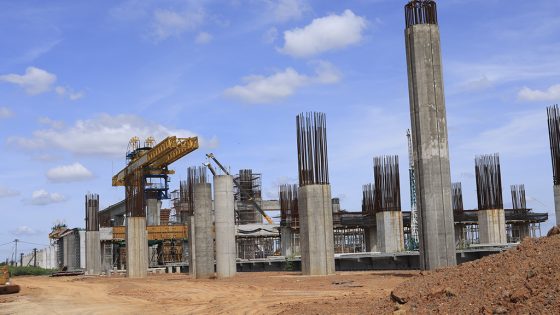Construction industry growth has continued for the sixth consecutive month, indicating a “continued industry revival”.
The headline S&P Global UK Construction Purchase Manager’s Index (PMI) registered at 53.6 for August, slightly down from 55.3 in July. Any figure above the neutral mark of 50 represents an uptick in activity.
The small reduction was due to a slight drop-off in civil engineering growth, which stood at 51.8.
Conversely, housing activity growth rose to 52.7 – its highest acceleration since September 2022.
Brendan Sharkey, construction partner at accountancy firm MHA, said “the fundamentals remain sound” despite the slight fall in headline PMI, with a “renewed sense of optimism” across the sector. He said he expected the six-month trend of growth to continue and the “solid” housing sector to pick up further in September.
He added: “While the uncertainty of what will be announced in the Budget may be causing a temporary blip in confidence, the clear message from Westminster is that the new government does want houses to be built.”
Commercial activity registered the highest growth rate, at 53.7, although this represented its lowest figure since March.
The report hailed a “robust increase” in new work across the sector, stronger on average than in the first half of the year.
However, it also noted employment numbers stagnated as squeezed costs prompted firms to delay hiring during August. Some firms surveyed for the report said hiring had been stymied by upwards wage pressure and a lack of candidates.
Kelly Boorman, head of construction at consultancy RSM UK, said labour shortages would impact firms’ capacity to deliver the volume of housing planned by government.
She added that the positive PMI figures painted a picture of “continued industry revival”, especially as the housing market gathers pace.
Boorman added: “While increased demand provides greater stability and potential investment opportunities, businesses are waiting on the outcome of the National Planning Policy Framework consultation for clarity on the planning process, sustainable growth and better resource allocation.”
Brian Smith, head of cost management at Aecom, said the PMI reading reflected “the continued positive summer for the prospects of the construction sector, aided by the stability created by the change in government”.
However, he warned of challenges to come, particularly with anticipated government spending cuts in the upcoming Budget.
He said: “Contractors will be hopeful that any decline in government spending is balanced out by a resurgence in private sector work, supported by lower interest rates later in the year.”
Another indicator of future recovery is a series of new projects, according to Max Jones, director of Lloyds Bank infrastructure and construction. He said this week’s auction for 131 green energy projects would give the sector another welcome boost, evidencing a growing pipeline of projects related to the net-zero transition.
Get the latest financial data and analysis on the UK construction industry at Construction News‘ newly-revamped CN Intelligence hub.
Get access to:
– Data dashboards on company results, construction activity, materials prices, plus pay and employment levels (premium subscription required)
– Monthly administrations and contract wins
– Written analysis of key industry trends

